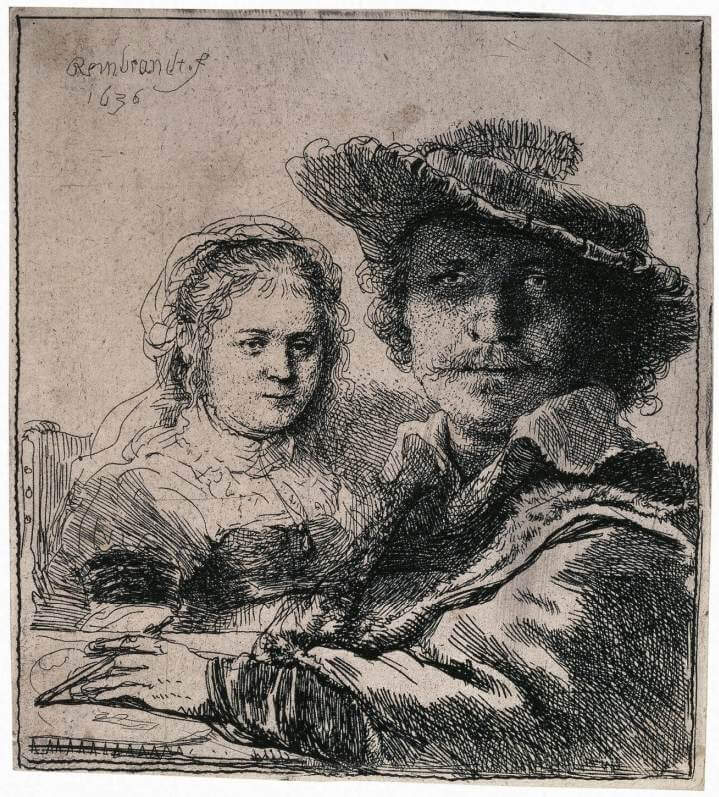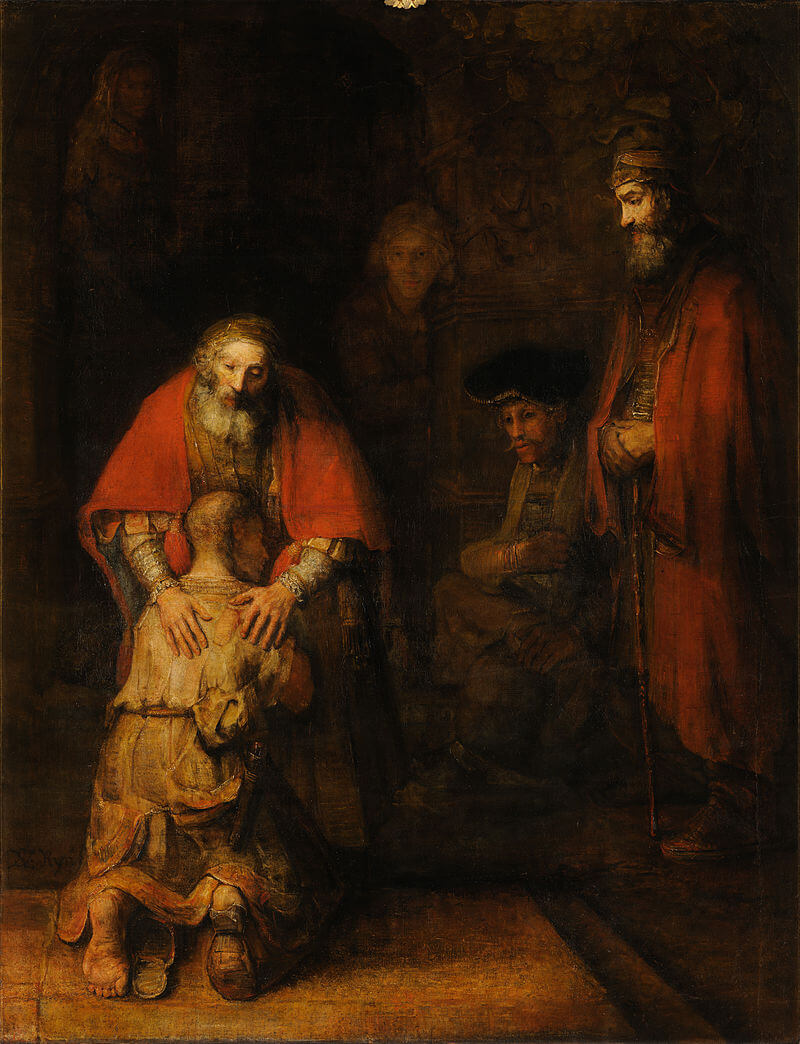Leisure • Sociability • Art/Architecture • Social Virtues
Rembrandt as a Guide to Kindness
Born in 1606, Rembrandt became a hugely successful painter when he was still only in his twenties. He earned a fortune and lived a wildly extravagant life.

Rembrandt van Rijn, Self-Portrait with Saskia, circa 1636
But by his early fifties, he was all but bankrupt: he had to sell his house and all the beautiful objects he had accumulated. In the world of respectable, prudent Dutch merchants, his economic ruin was regarded as deeply shameful – and, self-evidently, it was entirely his own fault.
Around the time financial disaster struck, Rembrandt painted a self-portrait, burdened with an honest, deeply sorrowful awareness of his own idiocy and folly: it is evident in his eyes that he knows he doesn’t deserve anyone’s sympathy.

Rembrandt, Self-Portrait, aged 51, circa 1657 (National Gallery of Scotland)
Fittingly, given what he had gone through, his culminating masterpiece, painted at the very end of his life relates to another, more famous character who has behaved in a clearly appalling way.

Rembrandt, The Return of the Prodigal Son, 1669
The picture illustrates a parable from the New Testament known as The Prodigal Son. The kneeling man has been prodigal – in the sense of profligate; he took his father’s money, ran away and spent it all on wine, women and song. The prodigal son stands in for Rembrandt himself – the waster who has brought ruin and disgrace upon himself. The son deserves to be hounded and humiliated. But this is not the reception he gets. In the painting, the elderly father-figure greets his son with great compassion and gentleness. Instead of giving his son the stern condemnation that he deserves, the father provides the love, warmth and forgiveness the son needs.
The picture conveys Rembrandt’s moving and very intimate realisation about the true nature of love: it reaches out to the selfish idiot, to the wastrel, to the passion-driven fool. Love properly understood is destined also for the undeserving.
Perhaps Rembrandt’s most moving work is a modest looking print entitled Christ Preaching. Significantly, it isn’t set in Galilee or Jerusalem in the 1st century AD. Instead the message of kindness is being preached in a back street of a Dutch town, in other words, to Rembrandt’s contemporaries.

Rembrandt, Christ Preaching, circa 1657
The message can be boiled down to three words: ‘I love you’ and it’s being beamed out to precisely the kinds of people who – in Rembrandt’s day – were viewed (with some justification) as particularly odious: they are, we can guess, thieves, layabouts, drunks, pimps and people who lent money at terrifying rates of interest; mean employers and con-artists. If Rembrandt were creating this work today, we might see – ranged around the alleyway – the representative unloveable figures of our times: a politician who incites conflict, the owner of a newspaper that puts profit above truth; someone who is proud of their vulgarity; a snobbish socialite, an arms trader, a feral youth, a sexual deviant or the kind of person who seems to take satisfaction in distressing others. It is to them that the message of love is being directed.
Rembrandt’s key insight is that everyone needs love – whether they deserve it or not. If we wait to be kind only to those who deserve kindness, we will be waiting for a very long time; in fact, we’ll have turned into monsters.



























